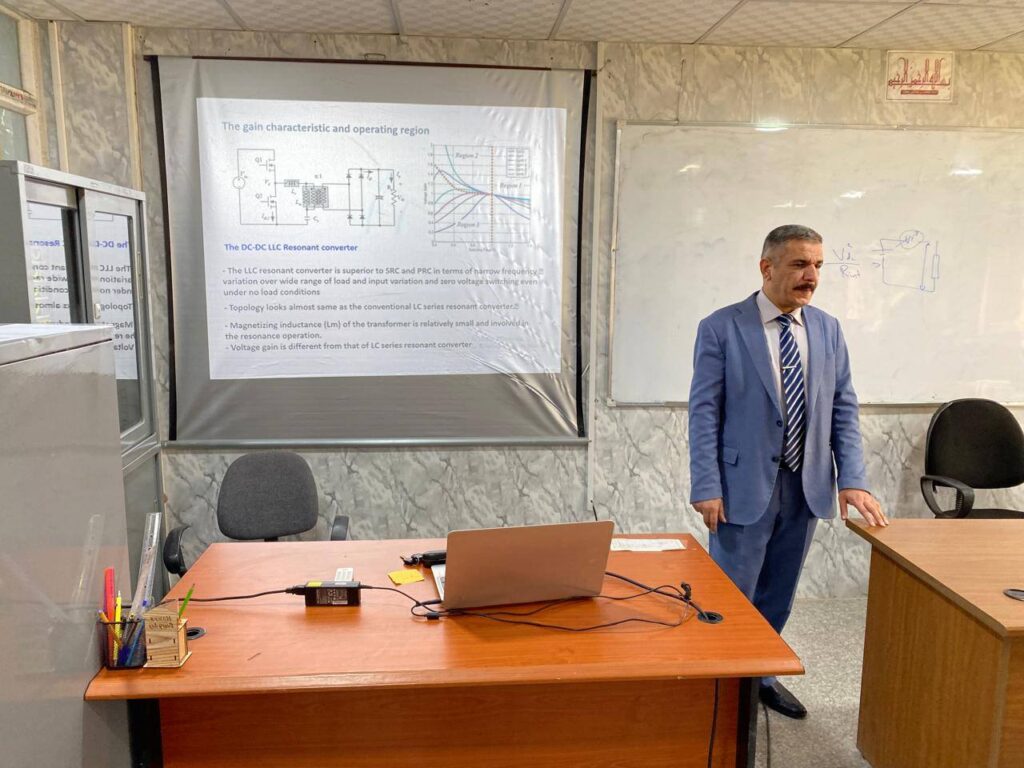
Kirkuk Technical Institute Council Holds Eighth Session for the 2024/2025 Morning Study Academic Year
2025-03-11
The Supreme Council for Quality Assurance holds its regular meeting.
2025-03-12Scientific Findings on Resonant DC Converters: an Innovative Technique to Enhance Solar Energy Efficiency
Under the auspices of Prof. Dr. Aliaa al-Attar, the Rector of NTU, and the supervision of Asst. Prof. Dr. Abdul Nassir Kashmola, the Department of Electrical Techniques organized a session for recent scientific findings entitled: achieving maximum power in a solar energy system using a series resonant DC converter.
The scientific findings focused on:
Understanding the design and operation of a resonant DC converter in a solar energy system. This is done to efficiently transform the voltage generated by solar panels into another voltage level suitable for charging batteries, powering loads, or connecting to the electrical grid. Using a resonant converter offers advantages depending on the application requirements.
The development aims to:
Introduce the working principle of this converter by using the concept of a resonant circuit and its components, such as inductors and capacitors, to generate a sinusoidal current wave. This is achieved by using zero-voltage switching (ZVS) and zero-current switching (ZCS) techniques for the electronic switches, which reduces switching losses and limits electromagnetic interference.
The lecture also addressed the technique of integrating a maximum power point tracking (MPPT) algorithm in the resonant DC converter. This is done to improve the power output of solar panels by adjusting the appropriate voltage and current for the converter to dynamically achieve the maximum power point.

n





